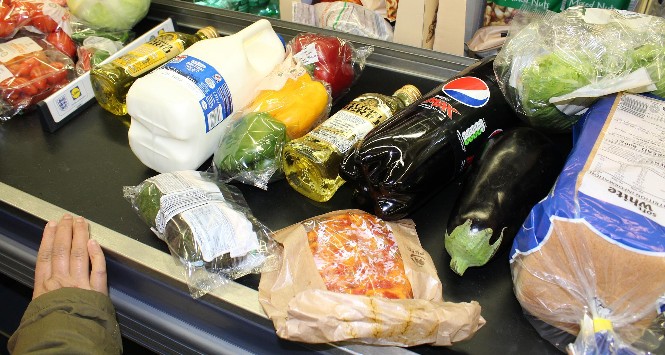Value and RYO continue to represent the resilience of the tobacco category, but retailers should ensure that a full range of products remains on display while it can be, as manufacturers continue to develop NPD.
By Kevin Scott
It may be vilified by Government and health campaigners, but while the tobacco category remains legal in Scotland, it is worth £1.6bn to the economy. Within this, around £1.47bn is spent on cigarettes. For local retailers, in a sector famous for low margins thanks to high taxation, driving volume is key. Within the category the trend for value products continues to be the main catalyst for sales movement.
Known as ‘economy’ at Imperial Tobacco, the company’s Trade Communications Manager Gayatri Barua-Howe says that this sector is growing at just under 10% year-on-year. She says: “Brands such as the JPS ‘Silver’ range has shown sales increases month on month, JPS ‘Silver’ Superkings have become increasingly popular, highlighting the growing numbers of adult smokers who are purchasing cigarettes above king size – currently 47.2% of economy cigarettes purchased in the UK are above king size.”
Barua-Howe also points to the fact Player’s Smooth has been available in packs of 19s. “With 60% of sub-economy tobacco shoppers choosing 19s pack formats, there’s clearly a drive for lower priced products.” Anecdotally, many retailers have observed customers asking simply for the cheapest brand, a relatively new phenomenon in the tobacco category – both in cigarettes and RYO. Jeremy Blackburn, Head of Communications at JTI says: “We like to think we’re making the most of trends in RYO and Value cigarettes. We are working to build our brands and we’ve now achieved a 38% market share in Scotland, which is growing. “It’s down to innovative brand activity.
Take something like Sovereign Blue, which has gone from being a new launch to 2.4% share of the total market, which is very significant.” In the medium price category Mayfair remains number one with an 11.2% share. For retailers that’s hugely important. Consider than more than one in every ten packs of cigarettes you sell is Mayfair. Do you have adequate facings? Balancing the right brands on your fixture is not an easy task. Blackburn is very pleased with Mayfair’s performance, but as he says: “There a lot of talk over value, and rightly so, but retailers shouldn’t lose sight of Premium brands like Benson & Hedges and Silk Cut, which represent 20% of sales.” Barua-Howe agrees: “Whilst we have seen our lower-priced tobacco brands performing particularly well over the past year, an increase in value-seeking behaviours has led to a slight dip in sales of brands such as Lambert & Butler. Despite the challenging economic conditions, more than one in 10 packs of cigarettes sold in the UK carries the L&B logo and this very British brand will continue to bring millions in gross profit for retailers for years to come.”
She also adds that premium priced cigarettes are still being purchased in the UK however a growing number come from illicit sources. “The price difference, mainly due to UK taxes, between legitimate premium priced cigarettes and illicit and non-UK duty paid packs is the single most important driver of illicit trade as this is the primary source for demand.” Illicit trade Indeed, HMRC and law enforcement agencies face a very difficult task as the UK has one of the highest excise tax regimes in the world for tobacco taxation. Thanks to illicit and cross border tobacco consumption in Scotland, the retail trade missed out on around £300m in sales in 2012. This is the equivalent loss in turnover of £24,000 for each of the 5,400 small shops operating in Scotland.
Barua-Howe comments: “An essential tool to mount enforcement activity is quality, reliable, current intelligence. Intelligence is like a series of jigsaws; individually we may only have one piece each, but if we all contribute our ‘piece’ a more detailed picture can be built by those responsible for completing the jigsaws – our law enforcement partners.” And with further restrictions on the horizon, Blackburn says there is more that can be done under current legislation: “Work closer with retailers, right down to a local level. Try to take out the illicit trade, cut down on the proxy purchasing – there’s much that can be done.” JTI itself is investing in a series of test purchases. Currently being trialled in the North West, there are plans to expand this scheme in 2014.
The initiative helps retailers comply with the law on underage sales by supporting and developing the knowledge of independent and convenience retailers in the vital area of youth access prevention for age restricted goods. And as for any retailers who are tempted to sell illicit goods, Blackburn has a simple message: “There is a small minority of retailers who aren’t playing by the rules, but they could bring the majority of responsible retailers down with them through creating a negative perception. The advent of the display ban will make it an even tougher battle as it blurs the distinction between the right side of the line and the illicit side. Blackburn adds “It’s time for the thousands of responsible retailers in Scotland to report those they believe are breaking the law.
They must do this to protect their business. It’s time to take a stand.” As Scotland counts down to the display ban in April 2015, SLR will be offering advice, but in the meantime retailers should continue to make the most of their sales opportunity, but as Blackburn says, attention should also be turning to the ban. “You can’t plan too early for the display ban,” says Blackburn. The earlier you begin, the more effectively the transition will be.” JTI has employed the ARTIST acronym (see box on previous page) which is a very good way for retailers to analyse what needs to be done.” Tobacco Products Directive Two As widely reported, the EU TPD 2 proposals want to ban all cigarettes in packs of less than 20 and roll-your-own (RYO) tobacco in pouches of less than 20g, along with a host of other measures. Barua-Howe says: “Independent and convenience stores stand to be hit the hardest. Currently, one in six corner shops in the UK is at threat of closure due to lost sales from tobacco smuggling and cross border shopping. The EUTPD proposals, if agreed, will act as an open invitation for criminals to peddle more illicit tobacco on UK shores.
This will further erode Scottish retailers’ incomes and deprive the Treasury of much needed revenue for public services. “We await the outcome of the final negotiations between the EU Parliament and the EU Council on the make-up of the EUTPD; Scottish retailers need be reassured that we have been and will continue to push for reasonable, proportionate and evidence-based regulation to protect the tobacco supply-chain.”
Blackburn says that the Directive is very much focussed on the EU and that means disproportionate focus on the UK. Illustrating the effect it could have on the illicit trade, he says: “Our view is that if you take the lowest street price for illicit goods and compare it with the price of a 20 pack to someone who buys 10s to limit their spend or their consumption and you’ll see that they can buy illegally for much less.” Anna Petrova, BAT Group Brand Manager FMC, UK & Ireland adds: “We’ve always said that we support sensible, balanced regulation that takes into account all the people it will impact before being decided on and implemented. We have made it clear throughout this process that many of the proposals on the table were not proportionate, were unlikely to succeed in addressing public health objectives and would lead to an increase in black market sales.” There is much discussion left on this subject, and on the continuing encroachment of the illicit trade, and the prospect of plain packaging, but while these talks continue, retailers would be best served by concentrating on ensuring their fixture is at its best, while keeping an eye out for any illicit activity nearby.
Planning for the dark market
With the display ban for smaller stores looming, the key principles of category management have never been so important. Retailers shouldn’t wait for the display ban to happen; they should be prepared. JTI says it’s important to monitor sales and ensure the basics of category management are put into practice, using techniques such as the company’s ARTIST plan. Q Availability – 100% availability 24/7 is key.
Remember to review stock levels each morning and prior to peak trading times. Out-of-stocks will only lead to lost sales Q Range – Stocking a wide range of pack sizes, as well as price marked and non-price marked packs, will demonstrate to adult smokers that they are getting the best possible choice and value Q Training – Ensure staff are well trained on the law surrounding the sale of tobacco and are kept up-to-date with regulatory and legislative changes Q Innovation – Support new tobacco products and pack innovations in store.
These have been developed in line with trends in the market place Q Sales – Take time to know which areas are in growth, what the most popular pack formats are and what sells well in your region Q Technology – Understanding what is happening in your store and being able to pinpoint key sales trends is a priceless insight. A good EPoS system will help get the balance right.
Has Capsule caught on?
With 350 millions packs sold globally and an estimated value of £15m in the UK, has capsule made a breakthrough? Given the number of brands who have launched products, it could be argued that it has. BAT Group Brand Manager FMC, UK & Ireland Anna Petrova is keen to point out that the growth of capsule products is something retailers should take note of. BAT was there from the start, with Lucky Strike being the first product in Europe to use capsule technology, and as of October 2013, Pall Mall cigarettes of all tar levels and formats now include capsule technology giving adult smokers the choice of clicking the capsule in the filter to release a subtle fresh taste or keeping the cigarette un-clicked to retain the original Pall Mall quality blend. “Capsule technology gives adult smokers the flexibility to try something new, says Petrova. Some of the UK’s biggest tobacco brands have also embraced the technology, from Marlboro to Lambert & Butler and B&H.
RYO boom continues
Worth £1.9bn and growing at 15% YOY, the UK roll your own (RYO) market is currently the biggest sector of the tobacco category by volume and the second fastest growing price sector in the UK tobacco category. JTI’s Jeremy Blackburn says the growth of value brands covers both cigarettes and the RYO market, driven by a combination of economic conditions and the high taxation. He says: “Within the cigarette sector, value is the biggest part of that, but if you were to compare RYO to that list of sub-sectors, it’s now the single biggest part of the tobacco category.” An incredible journey for a product that wasn’t so long ago the preserve of the older generation and student fraternity. “Acceptability has shifted and there’s more availability as a result,” says Blackburn.
“From JTI’s perspective we were there at an early stage and have moved with the category, with products launches like Holburn Smooth Taste and Sterling RYO.” JTI also has the leading RYO brand in Amber Leaf, which when you use the principal that 0.4g of RYO tobacco is used in constructing a single stick, gives it a 10.3% volume share of the tobacco market, making it the UK’s biggest tobacco brand. In Scotland Golden Virginia flies the flag for Imperial Tobacco and the company’s Gayatri Barua-Howe say: “On a regional level, Imperial Tobacco’s RYO portfolio in Scotland has seen its market share grow to over 51% with particularly strong sales in GV Smooth. In March this year Golden Virginia Smooth was re-branded as GV Smooth which has had a positive effect on the brand and UK sales volumes are up by over 28%.” She adds that the RYO smoker’s search for value has seen reduced pack sizes which contain a combination of tips and papers (or both) become increasingly popular.
At STG UK, Alan Graham points out that the value of the RYO category has almost doubled in size in just three years. “It’s still growing at an incredible rate of 12% and shows no signs of slowing,” he says, also quick to highlight its value as the main catalyst for this growth. “Price is now a determining factor when deciding which brand to purchase, so stocking a range of quality RYO products that offer great value for money is essential in today’s economic climate. Brands such as our Salsa RYO tobacco range have been designed to appeal to these shoppers, offering a quality RYO at an exceptionally low cost.”






